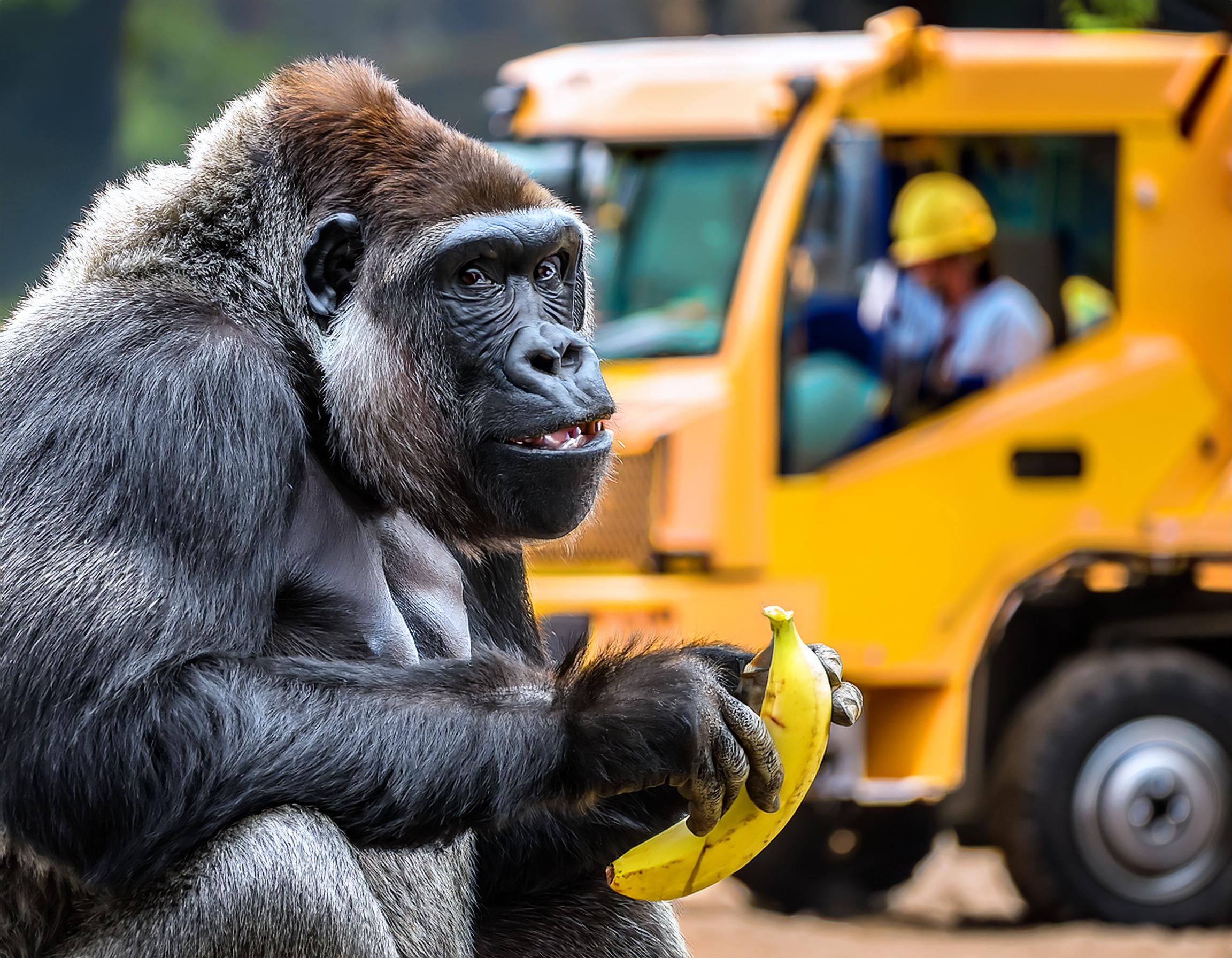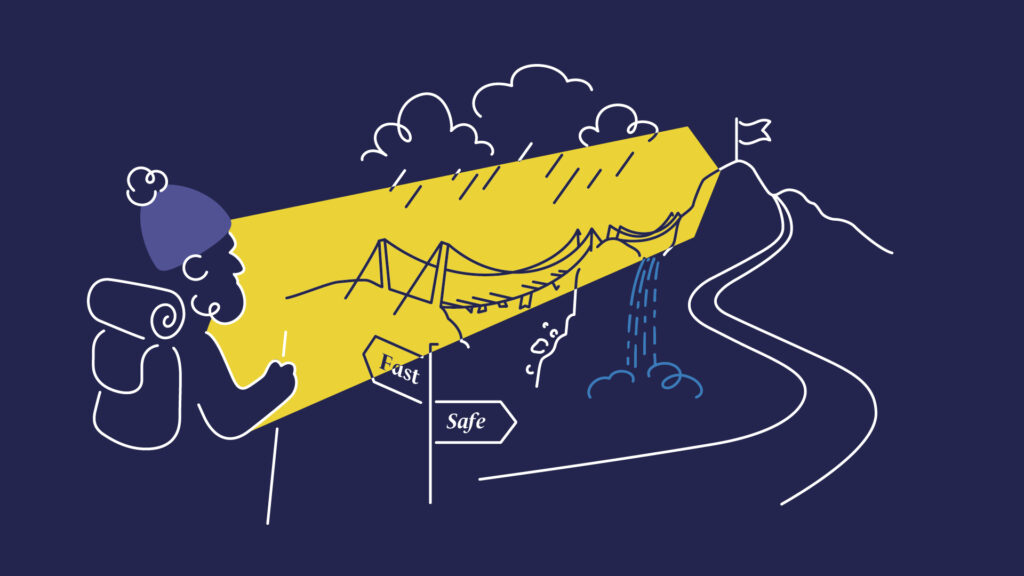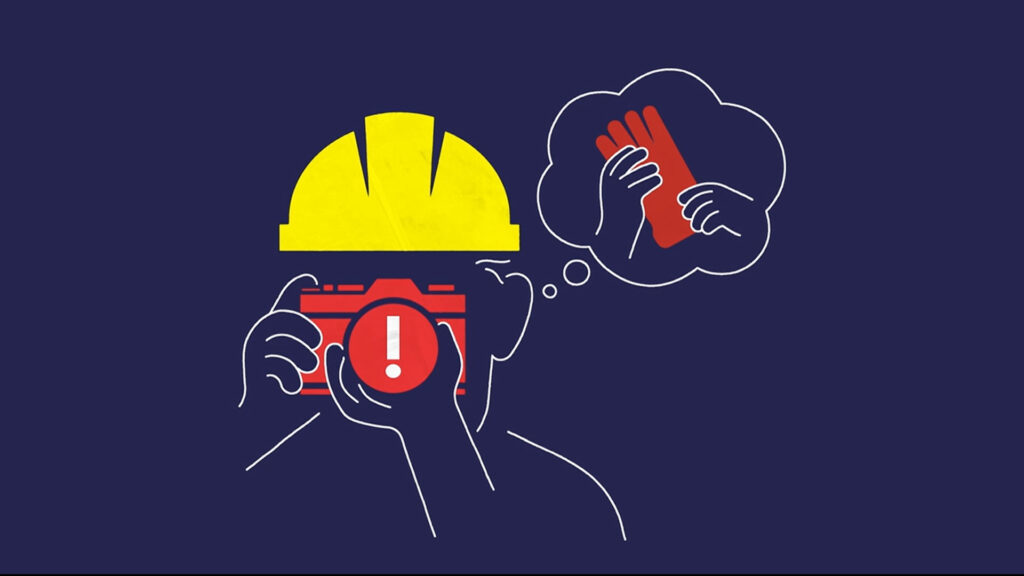
Ever hear the one about a gorilla, a banana and a construction site? No, it’s not the start of a bad joke… but it might be a great way to talk about hazard awareness at work. Before we dive in, let’s talk about the phenomenon of inattentional blindness.
Inattentional blindness is the tendency to overlook unexpected objects or events because our attention is focused elsewhere. It’s that moment when you’re so locked into a task that you completely miss what’s right in front of you.
A classic example is the viral video where people were asked to count basketball passes. Half way through, a person in a gorilla suit casually walks through the scene. In the initial experiment, fifty percent of people were busy watching the ball, they missed the big furry guy entirely.
Don’t believe me? Watch this video and see how you go.
You probably saw the gorilla this time. That’s because you knew to look for it. But did you catch the other changes?
This experiment by Dan Simons and Christopher Chabris is a perfect example of how we can miss the unexpected when we’re focused on something else. And these ‘invisible gorillas’ don’t just show up in psychology experiments—they can show up anywhere—even in the workplace.
Are There Gorillas in Your Workplace?
In the world of safety, these ‘gorillas’ represent the hazards and risks we overlook. And because we don’t notice them, we don’t manage them. They’re the slippery patches, unguarded equipment, or that one toolbox always sticking out where it shouldn’t be. We don’t see them because we’re either too focused on our work, or our attention is pulled elsewhere. And the scariest part? The more experienced we are at a task, the more likely we are to miss those gorillas.
It’s like when you’ve driven the same route to work for years, and suddenly realise you don’t remember half of the journey because your brain’s on autopilot. Our attention works the same way when it comes to spotting hazards. The things we don’t expect to see—or haven’t trained ourselves to look out for—can go totally unnoticed.
It’s Not Just Blindness—It’s Deafness, Numbness, and Even Smell
Turns out, inattentional blind spots go beyond what we see. There’s inattentional deafness (yep, not hearing that beeping alarm), numbness (missing out on those vibrations that signal machinery isn’t running right), and even anosmia (not catching a funky smell that signals a potential problem). So, we’re not just missing the gorilla—we might be missing all the sounds, touches, and smells that are trying to wave red flags too!
How to Make Those Gorillas Stand Out
So, how do we make sure our team’s not missing gorillas in the workplace? Here are some practical tips to improve hazard recognition and give inattentional blindness the boot:
- Change Your Perspective, Literally
Sometimes, our routines cause us to overlook risks. Challenge your team to switch things up—whether it’s entering the job site from a different direction or observing a task from a new vantage point. This small shift can highlight hidden hazards and encourage a broader awareness of the environment. - Gorilla Hunts
Before starting any task, take a deliberate moment to scan for potential risks. This isn’t just a quick glance, but an intentional “safety sweep” to identify anything out of place. Encourage team members to take a moment to step back, look around, and ask themselves, “What’s the gorilla in the room?”. This brief reset can help bring hidden hazards to the surface. - Engage All Senses
Don’t just rely on what you can see—train your team to engage all their senses. Strange sounds, unusual smells, vibrations, or even a subtle change in the environment can signal a potential issue. Encourage your team to tap into these cues as part of their hazard recognition process. - Visual Cues
Strategically placed visual cues can be powerful reminders. If you want to mix it up, you could even incorporate the gorilla theme—literally! Place gorilla stickers or signs in hazard-prone areas as a playful yet effective reminder for your team to keep an eye out for “hidden” risks. These visual cues add an extra layer of engagement, helping everyone stay alert to the unexpected. - Routine Check-ins
Routine safety check-ins are essential, but asking a simple, open-ended question like “What might we be missing here?” can take them to the next level. This approach encourages your team to think beyond the usual hazards and consider risks that may not be immediately obvious. By regularly challenging your team to look with fresh eyes and a “beginner’s mindset,” you create a culture of proactive hazard recognition.
Ready to Spot the Gorillas?
Next time you’re out on site, take a moment to really look. Are there any hazards you’ve been walking right past? Any gorillas quietly munching away away while everyone’s focused on something else?
Inattentional blindness can make even the most obvious risks disappear from view, but by sharpening your team’s awareness and encouraging fresh perspectives, you can ensure those hazards are caught before they escalate. The goal is simple: to make hazard spotting second nature, so no risk—big or small—slips through the crack
Want more curated content like this straight to your inbox? Subscribe to our newsletter. 👇



